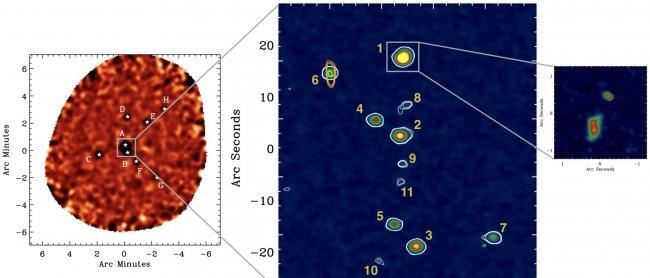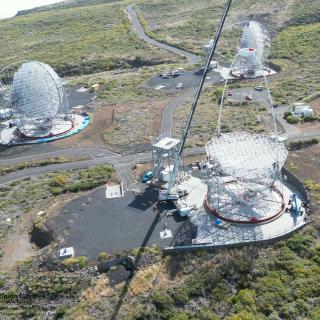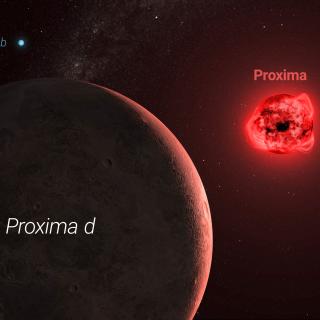With observations made with the Herschel Space Observatory, with the APEX antenna and with the ALMA interferometer it has been possible to observe the formation of a cluster of galaxies in deep space, when the Universe was only a tenth as old as it is now.
The European Space Agency, ESA, launched the Herschel Space Observatory in 2009. It was the first observatory able to take far infrared spectra over the full range. Using it the team of researchers focused on what seemed to be a single cosmic object which is very red in the far infrared, and decided to study it with APEX and ALMA.
APEX is a 12m diametger radiotelescope in the Atacama desert in Chile, which was set up as a first step in the project ALMA, a group of 66 radiotelescopes of 7m and 22m in the same area. The result was the discovery of a concentration of dusty galaxies in the early univers. They are on the point of merging to form the centre of a future massive galaxy cluster.
Ivan Oteo, the Principal Investigator on the study, who currently works in the Institute of Astronomy at the University of Edinburgh and the European Southern Observatory, points out how rare it is to observe this type of phenomena. “We think that the duration of dusty bursts of star formation lasts a relatively short time “ he explains, and adds “ these galaxies are usually in the minority at any epoch and at any place in the Universe. That is why finding a large number of bursts of dusty star formation emitting at the same time like this is very puzzling, somethiong we need to understand”.
Ismael Pérez Fournon, Researcher at the University of La Laguna (ULL) and the Instituto de Astrofísica de Canarias (IAC) who participated in this study comments that “ using the data from ALMA, whose resolution and sensitivity are very high, we are able to study the formation of clusters of galaxies when the age of the Universe was less than 1,500 million years”. Helmut Dannerbauer, another researcher at the IAC and the ULL involved in the discovery points out the difference between this result and “ the present theoretical and computation models which suggest that this type of very massive clusters needed much more time to evolve”.
An independent study led by Tim Miller, a doctoral research student a Dalhousie University in Canada and Yale University in the United States have discovered a similar concentration of galaxies. In their case the finding was based on observations with a telescope at the South Pole, with the Herschel Space Observatory, and follow-up observations with APEX andALMA. “We still do not know how these clusters of galaxies grew so much and so quickly. They did not form gradually during thousands of millions of years as current theories of the formation and evolution of galaxies predict” says Miller. Scott Chapman, of Dalhousie and Cambridge Universities concludes that “These discoveries give us a great opportunity to study how massive galaxies joined together to form galaxy clusters”.
Other links of interest:
- ESO Press Release: Ancient Galaxy Megamergers.
- Paper: Oteo, I. An Extreme Protocluster of Luminous Dusty Starbursts in the Early Universe. The Astrophysical Journal. DOI: 10.3847/1538-4357/aaa1f1 / http://adsabs.harvard.edu/abs/2018ApJ...856...72
- Paper: Miller et al. A massive core for a cluster of galaxies at a redshift of 4.3. Nature. DOI: 10.1038/s41586-018-0025-2 / http://adsabs.harvard.edu/abs/2018arXiv180409231M



